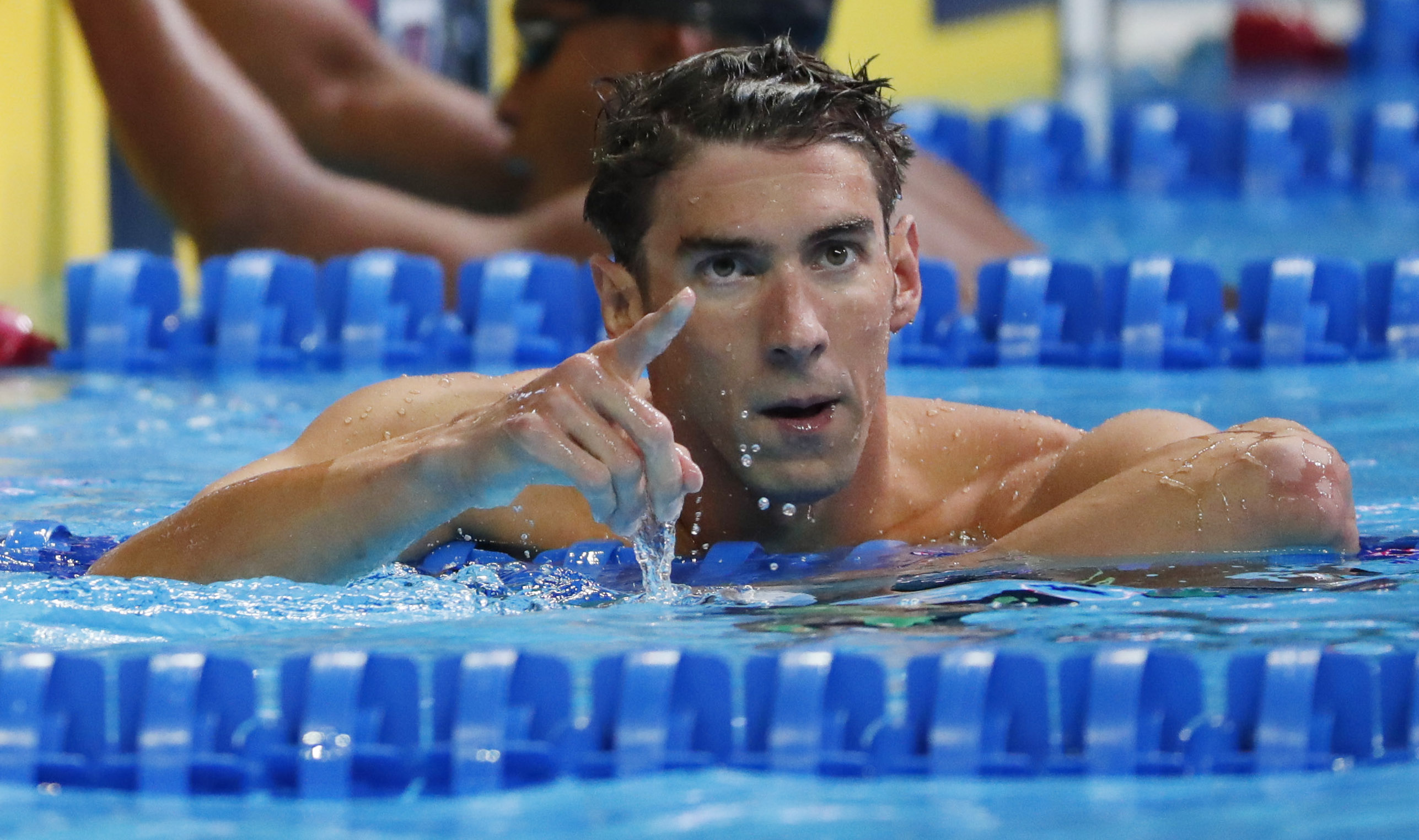OMAHA — Michael Phelps qualified for his fifth Olympic Games and secured roster spots in all three events he entered: the 100-meter butterfly, 200 fly and 200 individual medley. By all accounts, he had a successful U.S. Olympic trials.
Except for one measurement — his times.
“It's frustrating to not be able to go the same time or faster than I did last year, especially because I think I'm in better shape than I was last year, but I believe I can,” Phelps said. “I'm not going to put a limit on myself of what I can or can't do. I think time will tell just what we can do. I definitely think I can go faster in (the 100 fly) … and the 200 fly can be faster.”
Phelps’ longtime coach, Bob Bowman, said he thought Phelps’ times at the trials were mediocre.
By that measure, so were a lot of other U.S. swimmers’ times. Sure, the races here resulted in dramatic finishes and emotional victories. But that doesn’t mean the times bode well for a truckload of gold medals in Rio de Janeiro.
![Michael Phelps, Katie Ledecky headline Rio Olympics swim roster [oembed : 86671964] [oembed : 86671964] [oembed : 86671964] [oembed : 86671964] [oembed : 86671964] [oembed : 86671964] [oembed : 86671964] [oembed : 86671964]](/Portals/_default/Skins/PrestoLegacy/CommonCss/images/smartembed.png)
No world records were set, and one American record was broken — by Josh Prenot in the 200 breaststroke. Four U.S. swimmers who won individual gold medals in London four years ago did not even make the team in those events: Missy Franklin in the 100 back, Matt Grevers in the 100 back, Tyler Clary in the 200 back and Ryan Lochte in the 400 IM.
A small percentage of swimmers swam faster than their entry times.
All said it’s almost tougher to swim here at trials in the spotlight in front of a raucous 14,000-person crowd. The environment at times feels more like a rock concert than a swim meet — which can affect times.
“I think that’s what trials will do,” Phelps said. “I think there are a lot of people that, the lights come on and it’s a different experience.”
On the men’s side, only David Plummer (in the 100 back) and Prenot (in the 200 breaststroke) posted the best times in the world this year in their respective events, meaning those times would theoretically equate to Olympic gold.
On the women’s side, only Katie Ledecky’s 400 and 800 free times from Omaha and Lilly King’s 100 breaststroke would project to Olympic gold. Lots of times on the men’s side would project to silver or bronze — 13 — in individual events to just four on the women’s side. Ledecky, who did not qualify to swim the 100 free in Rio, is almost a lock to swim even faster in Rio — without three extra 100s to swim — and likely break a world record or two.
But outside of Ledecky, the world is still, in many events, faster than the U.S. just a month out from the Rio Games.
“One of the things that we have always done well, better than anyone else, is improve from the trials to the Games, and I'm confident we're going to do that again,” Bowman, the U.S. head men’s coach, said. “We have a great plan in place to do that and, quite frankly, we're going to have to do that if we want to have the kind of Olympics that we are expected to have and want to have.”
Said David Marsh, the U.S. head women’s coach: “This meet is about sharpening iron.”
Marsh acknowledged the uphill climb in some of the women’s events. For example, in the 200 breaststroke, no American woman has posted a top-10 time in the world this year.
“There are some real strengths and there are some, I would say, significant challenges, event-by-event,” Marsh said. “Katie and Missy and Dana (Vollmer) and the leaders that are experienced and have been down this road before, we're going to be counting on them to help kind of fast-forward the younger swimmers so that it's not an Olympic of an experience but it's an Olympic of performance.”
Marsh is encouraged that so many collegiate swimmers swam well enough to make the U.S. roster. He said that system — of swimming a conference championship and then NCAAs — is, essentially, a double taper, which is much like the trials/Games combination swimmers face now.
In the past, holding trials this late in the calendar year, about a month before the Games, has worked quite well in terms of resting and also training to perform even better a month later. These coaches and competitors hope that trend continues.
“Certainly, the goal coming into this meet was to go some times that were good enough to make the team and still have a little left to go a little faster,” said Nathan Adrian, who will swim the 50 and 100 free in Rio. “Who wants to sit here and be like, ‘Well, that's all I got! That's it!’ ”
Bowman said it’s easier to make adjustments and tweaks with swimmers already performing at a high level — which is where they are coming off this Olympic qualifying meet.
“You know what you have, so it makes it easier to manipulate the training to get them to do what you want them to do later,” Bowman said. “If you look at the numbers, we're very good at taking people who swim a good trials — or even a poor trials — and getting them to swim faster four weeks later.”
![sports-itunes-olympics [embed : 71637744]](/Portals/_default/Skins/PrestoLegacy/CommonCss/images/embed.jpg)
![Swimming talk with David Marsh by Going for Gold [oembed : 86917774] [oembed : 86917774]](/Portals/_default/Skins/PrestoLegacy/CommonCss/images/smartembed.png)
PHOTOS: BEST OF TRIALS
![U.S. Olympic swimming trials [gallery : 86407598]](http://www.gannett-cdn.com/-mm-/f6a3b34c6f19235d8a6fee96ad2014f1209ef1ac/c=0-478-3071-3102/local/-/media/2016/07/02/USATODAY/USATODAY/636030922319020545-USATSI-9367177.jpg)


![2016-7-4-michael-phelps [image : 86671930]](http://www.gannett-cdn.com/media/2016/07/04/USATODAY/USATODAY/636032304239611607-USP-SWIMMING-U.S-83080224.JPG)
